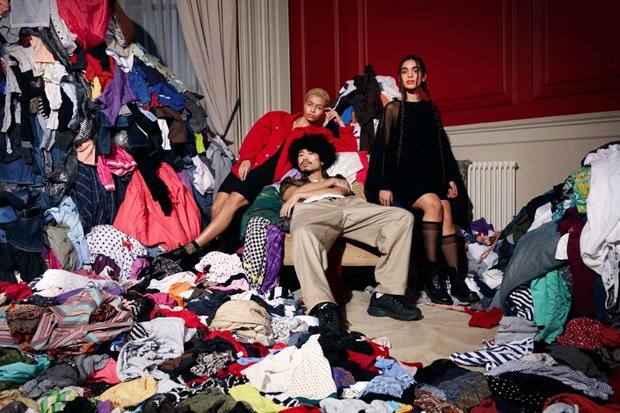The Sustainable Side Of Digital Fashion
As time goes by, we are becoming more and more familiar with the concept of digital fashion. Shanghai Fashion Week 2022 was hosted digitally as the recent lockdown was hitting China. This is way far from a minor trend. Digital fashion shows offer clothes without production, pollution or waste, and these events take place without any international flights.
The benefits of digital fashion, though, don’t end with runways and fashion weeks. There's a whole world behind it. According to TechCrunch, an estimated 30% of all manufactured goods end up as waste within months of rolling off the production line every year. With fashion being the second-most polluting industry, we can just imagine the enormous support that a digital way of constructing fashion can have. What if this becomes a habit? What if we actually get used to dressing digitally and attending digital shows? How much less waste would we create? How much more sustainable would the fashion industry be?
©Vanish:The Rewear Edit
In this sense, the prediction of James Joseph, founder of CYBR, is astonishing: "In four years we imagine that everyone will walk around with AR glasses on, and you will have the digital world imposed on reality for millions of people constantly. So, then you're walking down the street in a black hoodie and some black jeans, but then you've bought a digital fashion garment, and every single person that walks past you wearing AR glasses is gonna see you wearing that garment, in real life, in real time.”
Even in China, where local brands have been slower to embrace the new technology, the ultimate revolution has started. By 2024, Morgan Stanley predicts that the metaverse industry in China will be valued at $8 trillion. I believe this will accelerate, especially after the recent news that China state will pump over $15 billion into the metaverse.
©The Fabricant
In this sense, the prediction of James Joseph, founder of CYBR, is astonishing: "In four years we imagine that everyone will walk around with AR glasses on, and you will have the digital world imposed on reality for millions of people constantly. So, then you're walking down the street in a black hoodie and some black jeans, but then you've bought a digital fashion garment, and every single person that walks past you wearing AR glasses is gonna see you wearing that garment, in real life, in real time.”
Even in China, where local brands have been slower to embrace the new technology, the ultimate revolution has started. By 2024, Morgan Stanley predicts that the metaverse industry in China will be valued at $8 trillion. I believe this will accelerate, especially after the recent news that China state will pump over $15 billion into the metaverse.
©Z-Emotion
From my professional point of view—as someone who has built a large community of talented 3D digital fashion designers and is working on building Shanghai Digital Fashion Week (along with many other metaverse-related fashion projects)—I see that brands are racing toward the metaverse environment from both a B2B and B2C perspective. The biggest difference I see is how the two different cultures are approaching the metaverse and why. What I have personally learned from Web3 and digital clothing is the following:
• Now is the time to move—and fast. Staying "safe" has become riskier in markets like China.
• E-PR and PR benefit highly from digital fashion as it has become a new wave for the unification of fashion and the metaverse.
• Digital fashion still needs to be improved upon from a technological point of view. There needs to be more investment and more research and development. Unifying B2B2C in terms of the digital ecosystem will be the future.
©Courtesy of Roblox
While the games have just started, digital fashion seems our best option so far in terms of the ultimate revolution of technology and sustainability. China is definitely ready to ride the wave of fashion in Web3, making a major step toward the development of a new way of thinking not only in fashion but in our entire lives.
I think that digital fashion's sustainable side not only exists but also has a huge potential that still needs to be fully exploited. In the past years, the garment industry has been highly condemned for its environmental, waste and pollution issues. Is digital fashion the solution we've been looking for?
Source: Forbes
Words: Yanie Durocher
Photography Credit: ©Vanish, ©The Fabricant, ©Z-Emotion, ©Courtesy of Roblox





